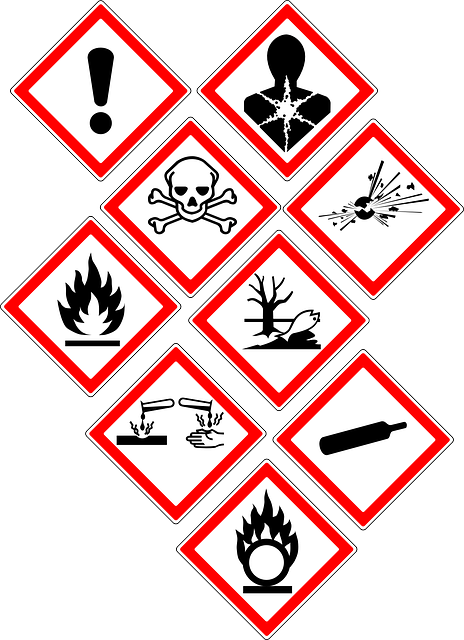Diplomats face significant challenges ensuring their safety and security, particularly in high-level diplomatic security contexts. To counter unprecedented surveillance threats from advanced technology and intelligence agencies, robust anti-surveillance technologies like encryption tools and secure data storage methods are essential. A multi-faceted approach involving stringent data protection protocols, advanced encryption techniques, and regular personnel training fortifies against electronic surveillance, social engineering, and document theft. Comprehensive training programs and drills for diplomats at all ranks prepare them for physical dangers and complex security challenges. International cooperation through mutual agreements, joint training, and the exchange of best practices creates a robust security network supporting diplomatic missions worldwide.
In the intricate world of diplomacy, ensuring high-level diplomatic security is paramount. With increasingly sophisticated surveillance and intelligence gathering techniques, diplomats face unprecedented challenges protecting sensitive information. This article delves into essential anti-surveillance and counterintelligence measures crucial for safeguarding diplomatic operations. We explore technologies, strategies, training, and international cooperation, providing a comprehensive guide to navigate the complex landscape of high-level diplomatic security threats.
Understanding High-Level Diplomatic Security Challenges
Diplomats, as representatives of their nations on the global stage, often find themselves in complex environments where their safety and security are paramount. High-level diplomatic security challenges stem from the delicate balance between facilitating international relations and protecting against potential threats. From hostile political climates to sensitive negotiations, diplomats must navigate through intricate landscapes, ensuring their communications, missions, and personnel remain secure.
These challenges necessitate a comprehensive understanding of counterintelligence tactics and anti-surveillance measures. With spies, hackers, and sophisticated surveillance technologies at play, diplomats must be adept at protecting classified information, maintaining privacy, and preventing unauthorized access to their operations. This involves implementing robust security protocols, employing advanced encryption techniques, and staying abreast of emerging intelligence gathering methods, thereby fostering a robust shield against potential breaches in high-level diplomatic security.
Implementing Anti-Surveillance Technologies and Techniques
In today’s digital age, diplomats face unprecedented surveillance threats from advanced technology and sophisticated intelligence agencies. To counter this, implementing robust anti-surveillance technologies is paramount for high-level diplomatic security. This includes employing encryption tools to secure communications, utilizing secure data storage methods, and adopting advanced authentication protocols to prevent unauthorized access. By integrating these cutting-edge solutions, diplomats can significantly reduce the risk of their activities being monitored or compromised.
Additionally, training staff in counterintelligence practices is essential. This involves teaching awareness of potential surveillance tactics, such as listening devices and social engineering attacks. Regular security drills and simulations help prepare diplomatic missions for real-world scenarios. By combining advanced technology with comprehensive training, diplomats can navigate the complex landscape of global surveillance with enhanced confidence and resilience.
Counterintelligence Strategies for Diplomats: Protecting Sensitive Information
In the fast-paced world of diplomacy, where sensitive information and confidential negotiations are paramount, safeguarding against surveillance and intelligence gathering becomes a top priority for high-level diplomatic security. Diplomats often find themselves navigating complex landscapes, dealing with potentially hostile environments, and managing vast amounts of classified data. Effective counterintelligence strategies are essential to mitigate these risks.
This involves a multi-layered approach, from stringent data protection protocols within missions to advanced encryption techniques when communicating with home countries. Regular security training for diplomatic personnel is crucial to raise awareness about potential threats, such as electronic surveillance, social engineering, and physical theft of documents. By staying vigilant and adopting robust counterintelligence measures, diplomats can ensure the integrity and confidentiality of their work, fostering an environment conducive to successful international relations and effective diplomacy.
Training and Preparedness: Equipping Diplomats for Threats
In today’s complex geopolitical landscape, ensuring the safety and security of diplomats is more critical than ever. To counter evolving surveillance and intelligence threats, high-level diplomatic security measures must include robust training programs for diplomats at all ranks. This preparation should cover a range of scenarios, from identifying potential stalking or surveillance activities to recognizing subtle attempts at information gathering. Diplomats need to be adept at detecting unusual behavior, understanding the latest technology used in espionage, and responding effectively while maintaining their composure.
Regular drills and simulations can play a pivotal role in enhancing these skills. By practicing crisis management scenarios, diplomats learn to make split-second decisions under pressure, ensuring they are ready to handle any unexpected situation that may arise during their missions. This holistic approach not only prepares them for physical dangers but also equips them with the mental fortitude to navigate complex security challenges, ultimately contributing to a more robust and resilient diplomatic corps.
International Cooperation in Safeguarding Diplomatic Operations
In today’s interconnected world, international cooperation plays a pivotal role in safeguarding high-level diplomatic security. Diplomatic missions across borders often face complex challenges, from information leaks to physical threats. By fostering strong partnerships and sharing intelligence, nations can enhance their ability to protect diplomats and sensitive operations. This collaborative approach involves establishing mutual agreements, conducting joint training exercises, and developing standardized protocols for crisis management.
Such cooperation allows for the exchange of best practices, advanced surveillance techniques, and counterintelligence strategies. It enables diplomatic communities to stay ahead of evolving threats, whether they stem from state-sponsored hacking, terror networks, or domestic adversaries. International partnerships are crucial in creating a robust security network that supports diplomats operating in diverse environments, ensuring their safety and mission success.
Diplomatic operations face evolving threats from advanced surveillance and intelligence gathering. To mitigate these risks, diplomats must adopt a multi-layered approach combining cutting-edge anti-surveillance technologies, robust counterintelligence strategies, comprehensive training, and international collaboration. By prioritizing high-level diplomatic security, we can ensure the effective protection of sensitive information and the preservation of peaceful international relations.
